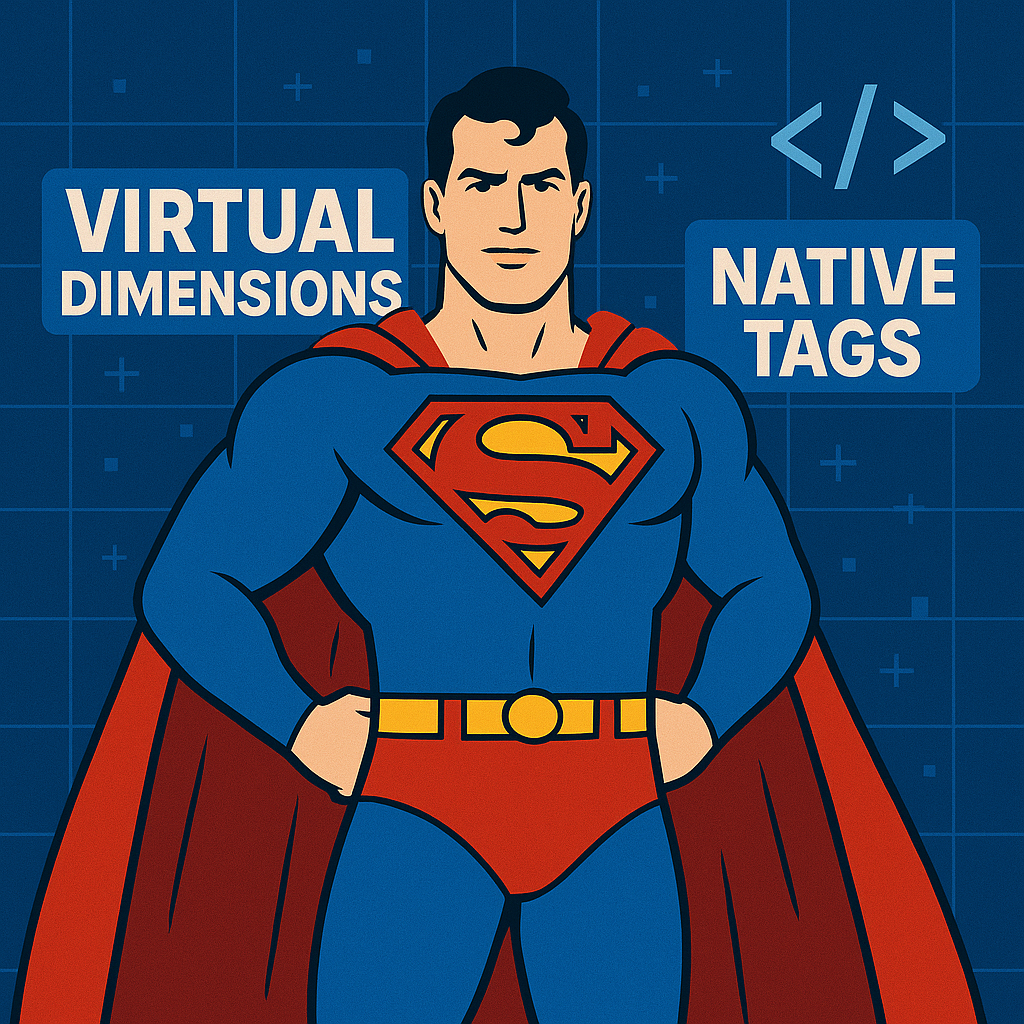This article is Part 2 of https://www.costory.io/why-waiting-for-perfect-tagging-is-a-costly-mistake-in-cloud-finops-part-1/

Virtual Dimensions to the Rescue
When native tags fall short, virtual dimensions can step in. Think of them as a rule-based engine layered on top of your cost data. Instead of depending on every resource being perfectly tagged at creation, virtual dimensions classify and allocate costs automatically using patterns in the data. For example: if certain services clearly belong to the machine learning team (e.g., Vertex AI, Amazon Bedrock), you can attribute them without needing explicit tags.
The 4 Super powers of Virtual Dimensions
Fast to Setup
In just a couple of hours, you can usually get 80% of your cloud costs bucketed into teams, environments, or projects.
Works retroactively on past data
Because virtual dimensions are rule-based, you can reallocate costs from years ago in one snap—like that legacy code no one wants to touch.
Adapt Quickly
When team scopes change, native tags become brittle—you’d have to re-tag resources and lose historical consistency. Virtual dimensions bridge this gap by letting you change or reapply rules instantly, keeping continuity in your reporting.
Supports allocation of shared & non- tagable services
Some costs—like Kubernetes waste, networking, or databases—are shared across teams and impossible to tag natively. Virtual dimensions allow you to allocate these fairly using rules of thumb or usage metrics.
When and How to Use Native Tags
Virtual dimensions are powerful, but that doesn’t mean native tags are useless. The key is knowing when to invest in them and how to enforce them without wasting effort.
3 Best Practices around Native Tags Programs
Set a simple tagging objective
Decide upfront which 2–3 tags really matter (e.g., team, environment, project). Remember: not all services can be tagged when you set your tagging objective…it needs to be by service.
Monitor compliance during your team rituals
Build a Tagging Dashboard so you can see where tagging is working and where gaps remain. Adoption will take time—so treat it as a gradual process, not a quick win. The key is discipline: remind the team regularly (weekly or monthly) that tagging matters, and celebrate progress to keep momentum.
Automate Enforcement
Use policies or IaC templates to ensure tags are added at creation time wherever possible and slack tagging status reminder.
Tagging hygiene drifts over time. Build in automated checks or a recurring team ritual to catch untagged resources before they pile up.
When to use Native Tags
- High-value workloads: Apply tags to the largest, most expensive services where you need fine-grained breakdowns
- Volatile environments: Use tags in fast-changing projects (like data and ALWAYS on ML (i.e expensive) workloads to avoid losing track of spend.
When NOT to use Native Tags
- Legacy workloads : Don’t waste expensive engineering cycles to tag legacy, deprecated workloads it is usually not worth the effort
- Negligible cost and/or flat workloads
“The smartest FinOps teams don’t choose between virtual dimensions and native tags—they combine them, using virtual dimensions to cover the gaps and native tags where precision matters most.
